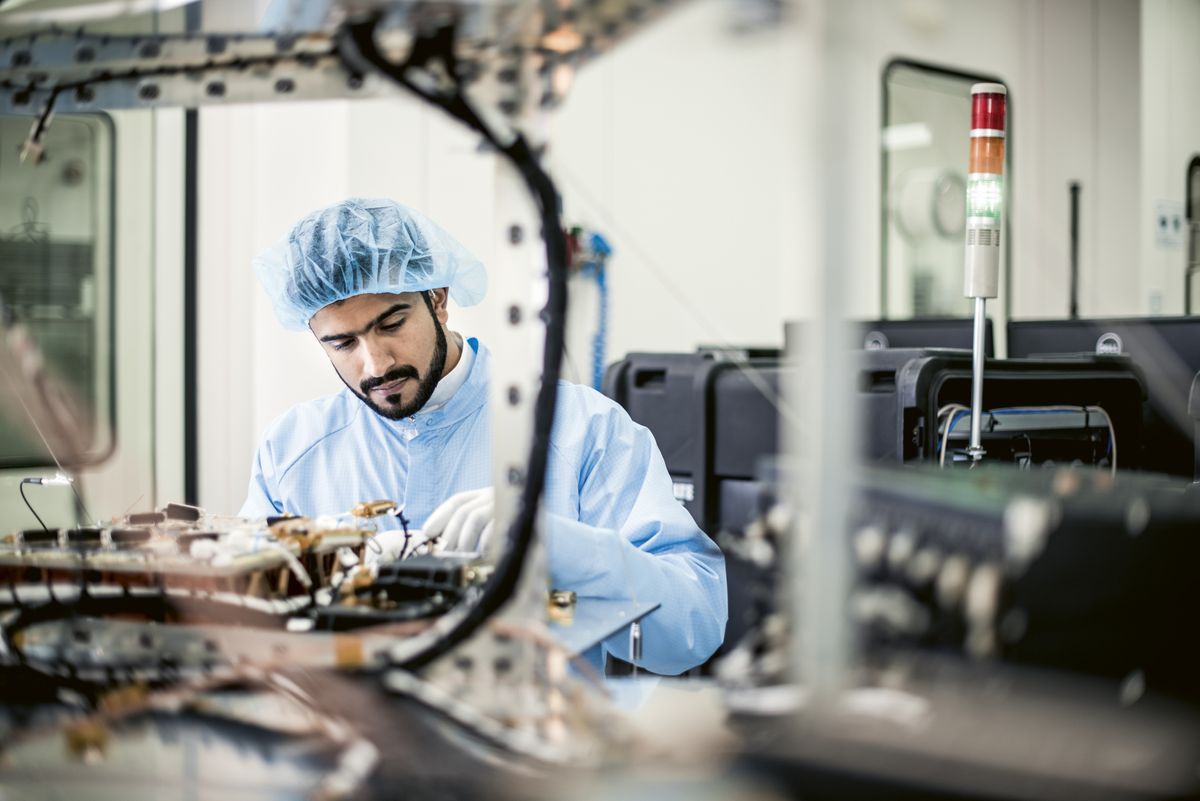
The United Arab Emirates (UAE) is sending a spaceship called Hope to Mars in what, if successful, will become the first interplanetary mission based in the Arab region.
The mission is focused on understanding Mars’ Climate and environment. It’s an issue that many missions have addressed before, but the Hope spacecraft will take a new and more comprehensive approach to the question. The UAE hopes the mission will help scientists around the world understand how the climate on the Red Planet changes over the course of a day and between Martian seasons; the mission could also shed light on how our neighboring world is losing its atmosphere.
Here is your cheat sheet for the mission.
Related: UAE’s Hope mission to Mars in photos
Hope is the UAE’s first mission beyond Earth orbit

The UAE is still fairly new to space flight, first taking part in a satellite launch in 2009 in association with a South Korean company. The first satellite built in the country, an Earth observation mission called KhalifaSat, launched in 2018.
Hope is the country’s first foray beyond Earth orbit. As with its first satellites, the United Arab Emirates recruited partners to help make the mission more feasible and to develop the knowledge necessary for the mission. In this case, the UAE partnered with three US universities that host professors with experience in spacecraft from Mars.
Related: A ‘hope’ from Mars: UAE’s first interplanetary spacecraft aims to make history on Red Planet
The mission had to be fast and cheap.

The Hope mission, also called the Emirates Mars Mission, was first announced in 2014 as a way to stimulate economic and technological development. The mission came with several stipulations: Although the project would be partnership-based, the team needed to build the spacecraft, not just buy it, and the spacecraft needed to reach Mars by December 2021, when the UAE will celebrate its 50th anniversary. That deadline required a launch this summer due to the complicated orbital alignments that put the Mars launch windows 26 months apart.
And, of course, the mission couldn’t be too expensive. In total, the spacecraft and its launch cost $ 200 million, according to the UAE, although that number does not include the costs of operating the mission in space.
Related: The boldest Mars missions in history
The UAE could be the fifth entity to visit Mars

Mars is hard. To date, only four entities have successfully visited Mars: NASA, Russia, the European Space Agency and India. If all goes well, the UAE would join that contingent.
But the country may not end up being the fifth visitor to Mars because China is also launching its first mission to Mars this summer as the orbits line up. Neither mission has yet announced when it will specifically hit the Red Planet, though both will be on their way for a date in early 2021.
(NASA’s Mars 2020 Mission, starring the massive Perseverance Rover, points to the same three-week launch window.)
Related: It’s the month of Mars! 3 Red Planet missions to launch in July
Hope carries three instruments

Hope, which is about the size of an SUV, carries three instruments. One is an image generator, which will capture photos in optical and ultraviolet light. The other two are spectrometers, which divide light into specific wavelengths present, one that works with ultraviolet light and the other with infrared light.
As a team, the three instruments will allow Hope to study the thin atmosphere of Mars, rich in carbon dioxide, to better understand the climate of the Red Planet and how it loses its atmosphere in space.
Related: UAE wants to rewrite what we know about the climate on Mars
Hope will have a unique orbit on Mars

While the mission instruments are based on existing technology, the Hope spacecraft will use a unique tactic to gather its scientific data: traveling in an orbit around Mars that no probe has ever taken before. Every 55 hours, the spacecraft will complete a circuit around the planet’s equator, flying 12,000 to 27,000 miles (20,000 to 43,000 kilometers) above the Martian surface.
That path will allow the probe to study climate changes throughout the entire Martian day, which lasts a little longer than an Earth day, and a year, which lasts almost two Earth years. The main mission will continue for a year on Mars.
Related: A brief history of the missions to Mars.
UAE wants humans to follow Hope to Mars

The choice to send its first interplanetary robot to Mars fits other priorities within the UAE space program. Currently, the primary focus of the nation’s human space flight is to send astronauts to International Space Station; The first Emirati astronaut, Hazzaa AlMansoori, launched in September 2019 for a weeklong flight. The UAE is already recruiting its next pair of astronauts and crafting strategies for longer missions in orbit.
But the red planet also sits firmly on the UAE’s goals. The country is preparing to participate in a Mars Analog Mission for the first time later this year. If all goes as planned, the country will soon be able to organize such analog missions, as well as other Mars-focused research, at the Mars Science City facility it plans to build in the desert.
Related: Hazzaa AlMansoori: the first mission of the Emirati astronaut space station in photos
Email Meghan Bartels at [email protected] or follow her on Twitter @meghanbartels. Follow us on Twitter @Spacedotcom and on Facebook.